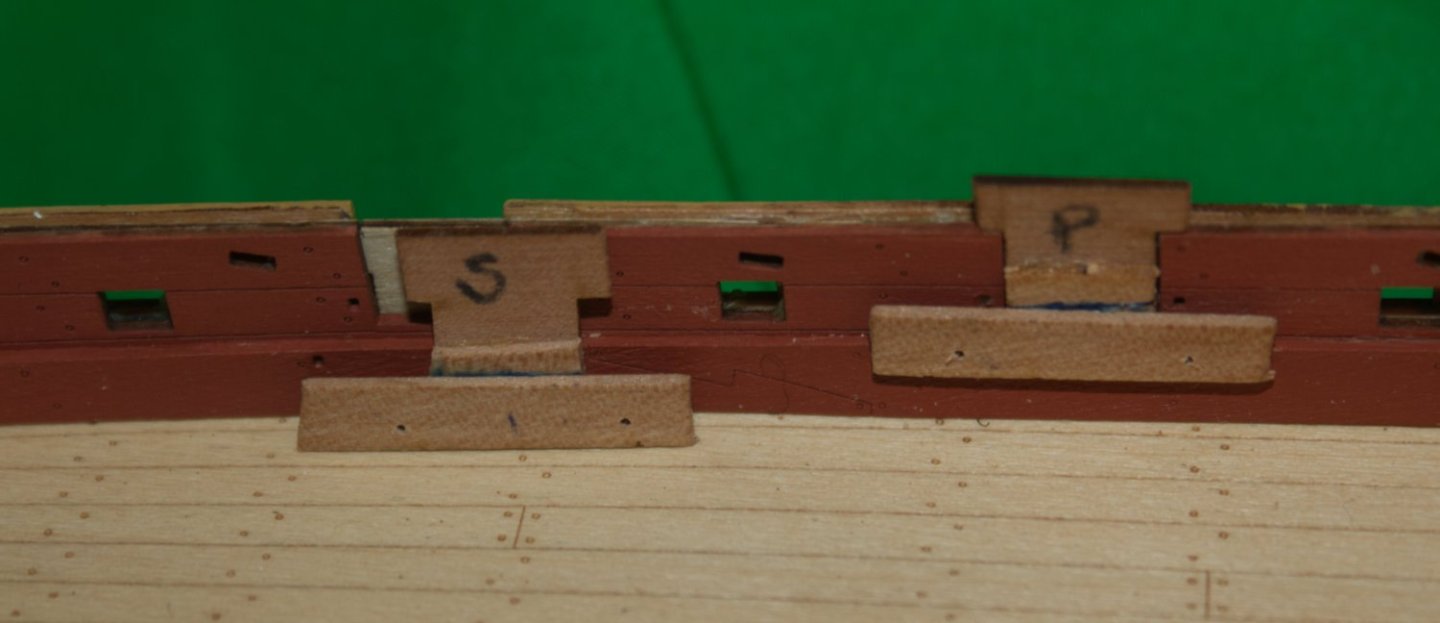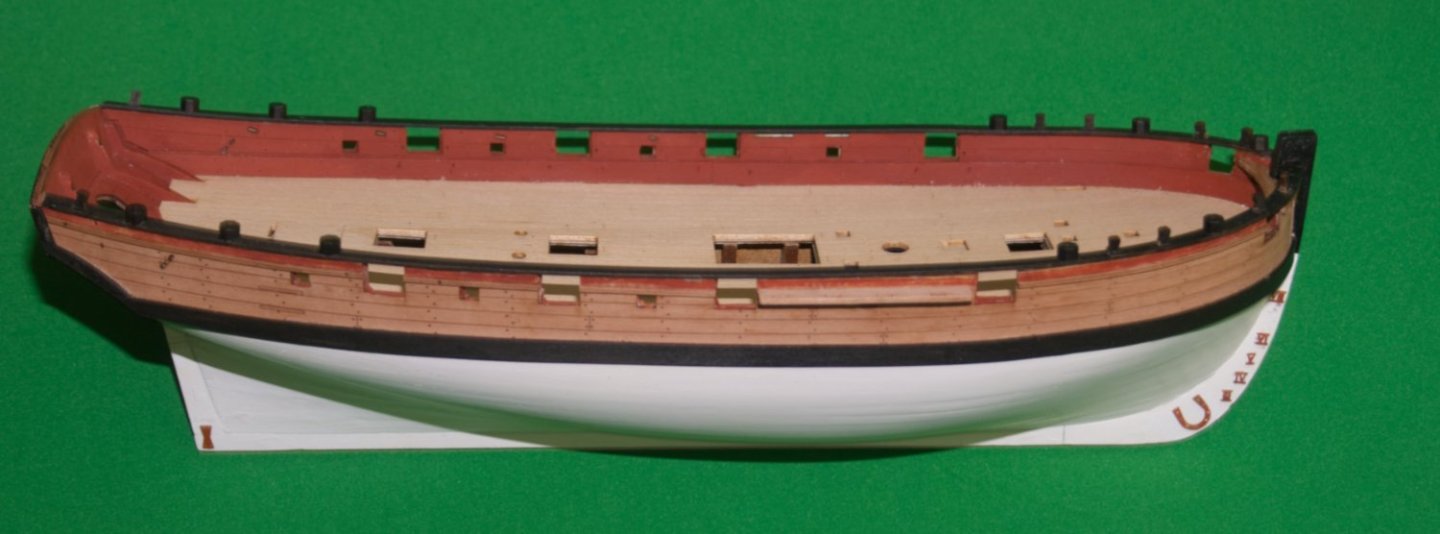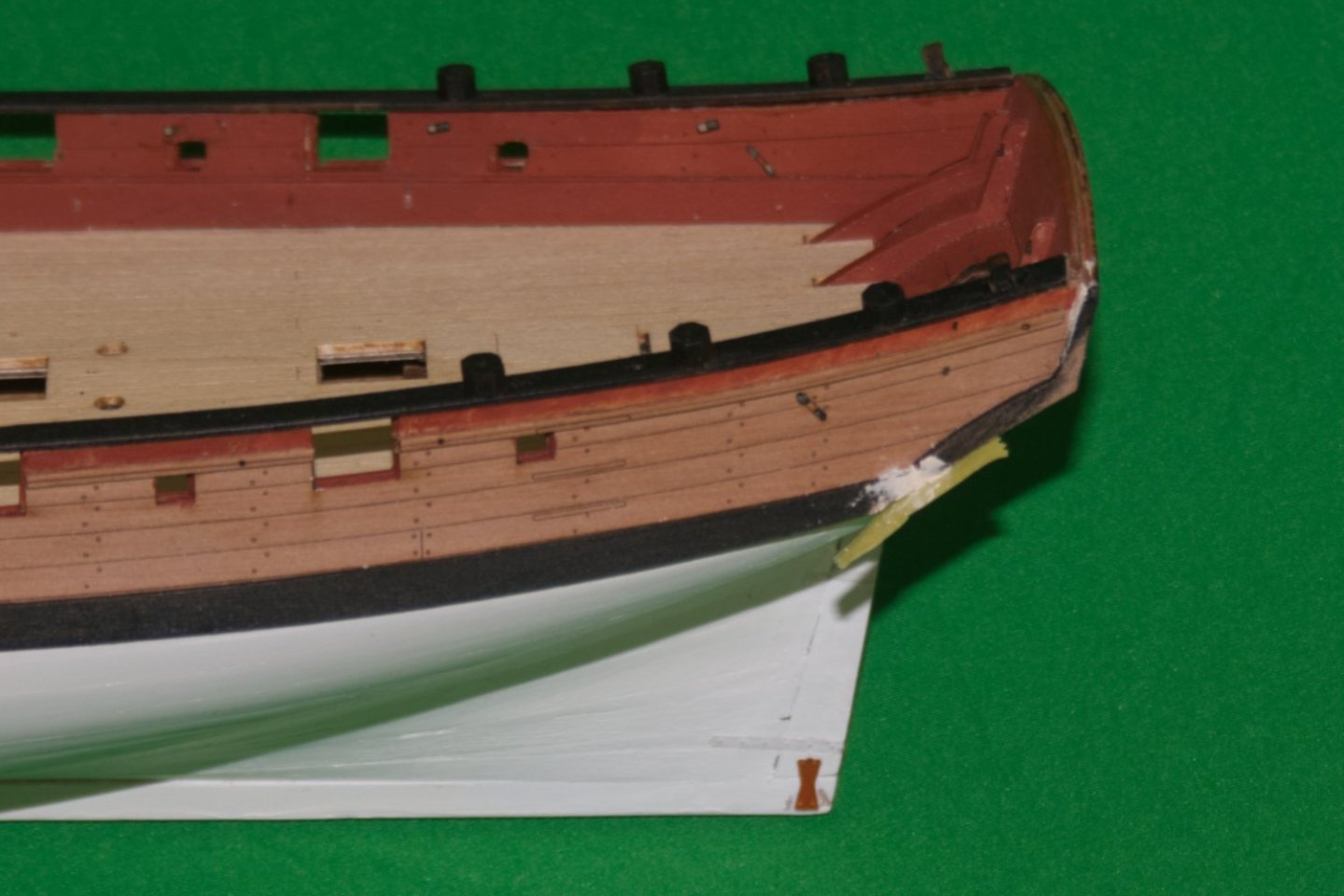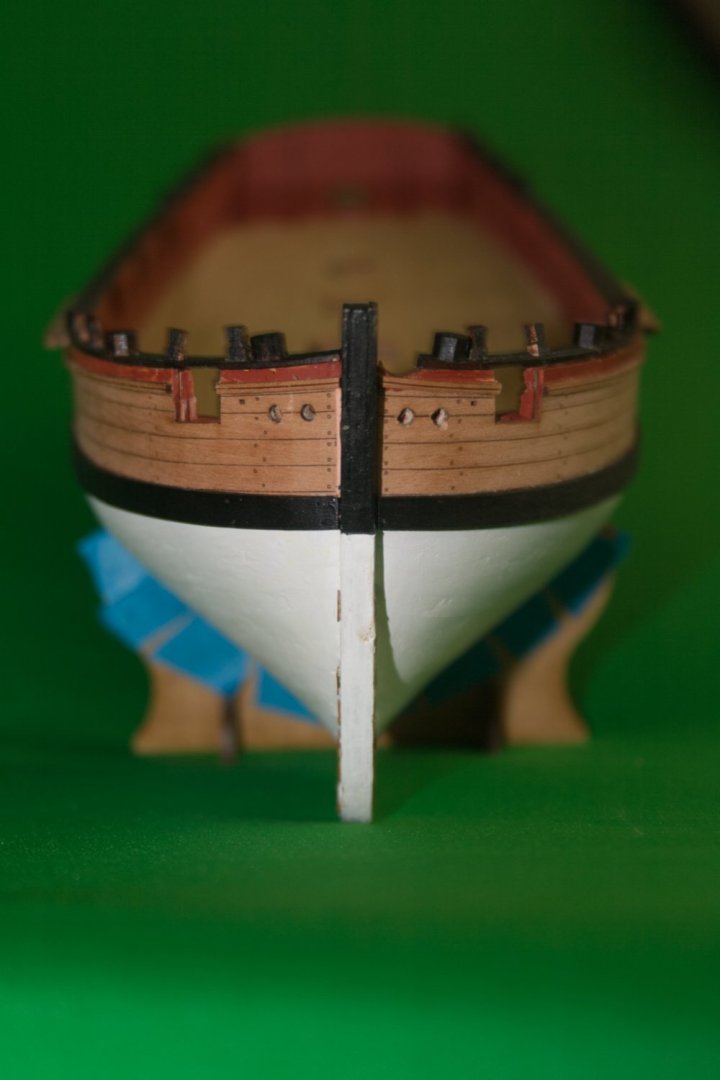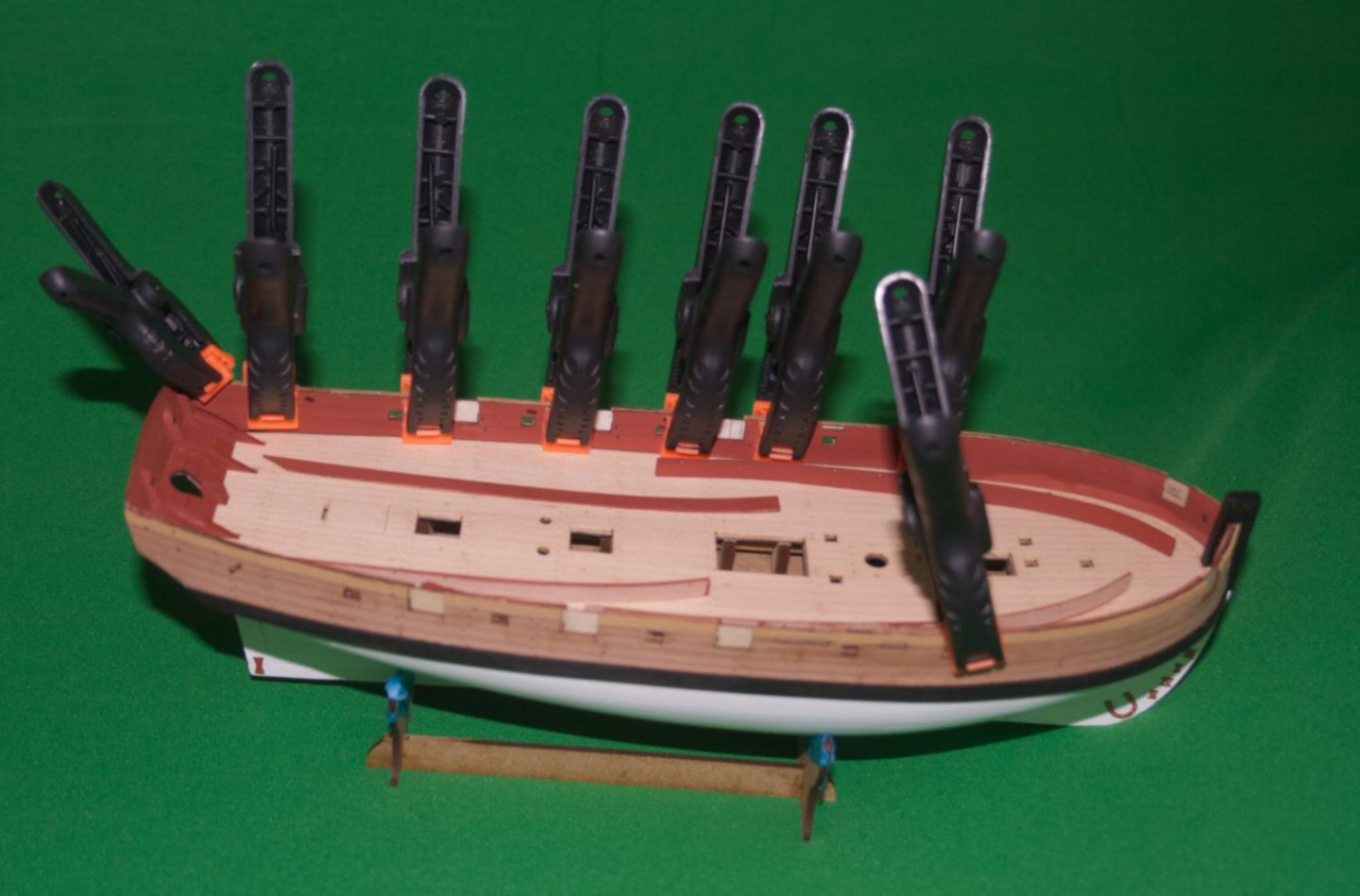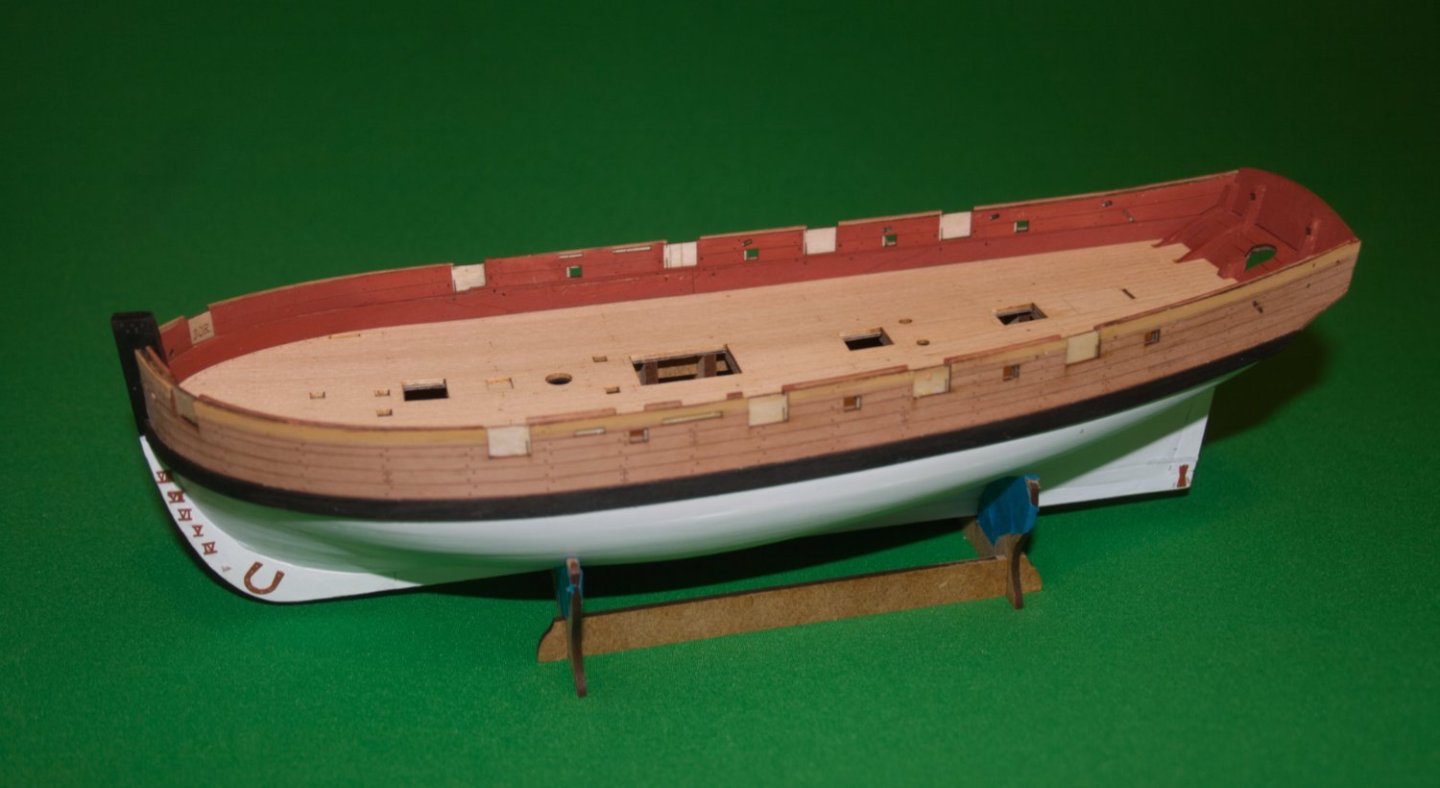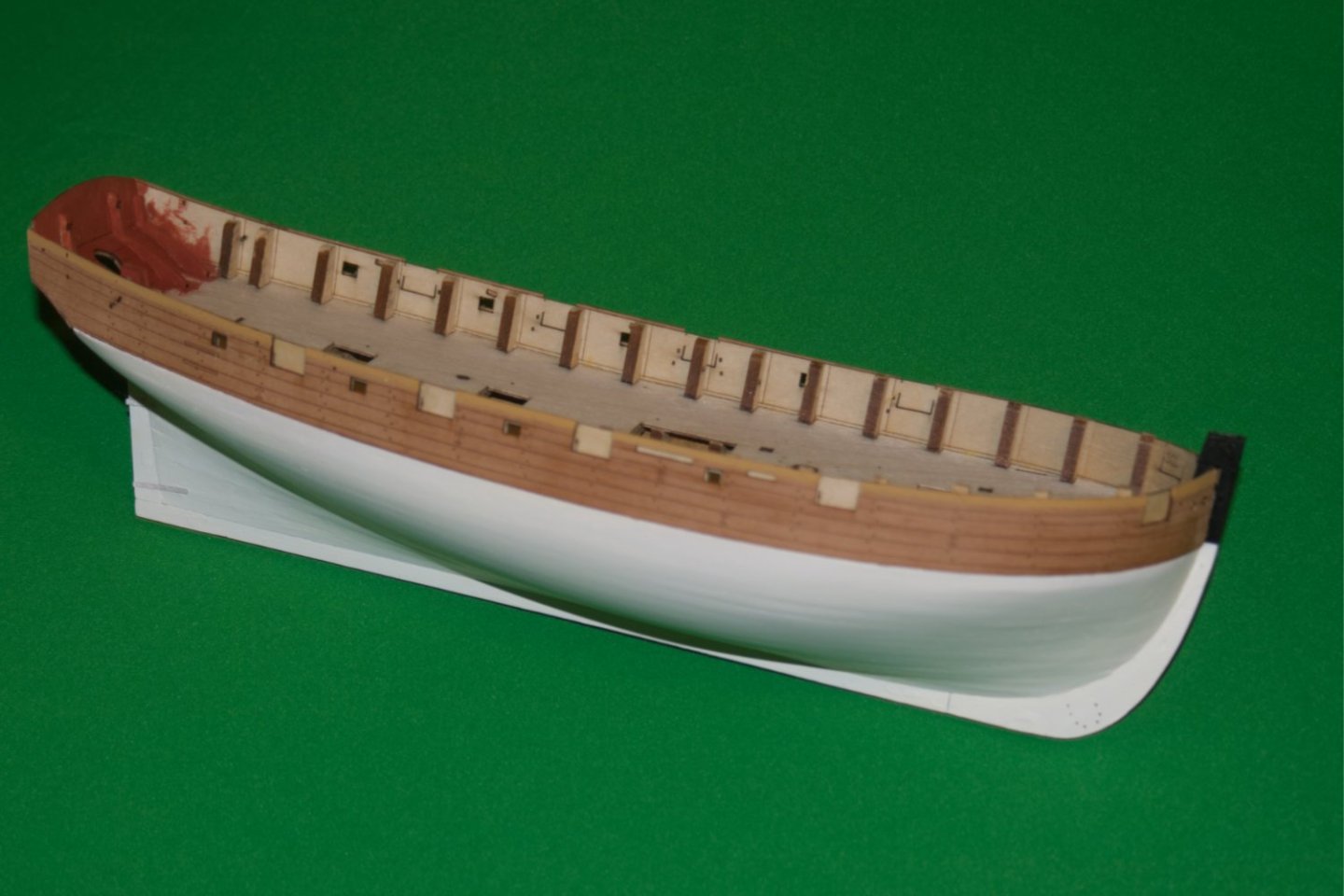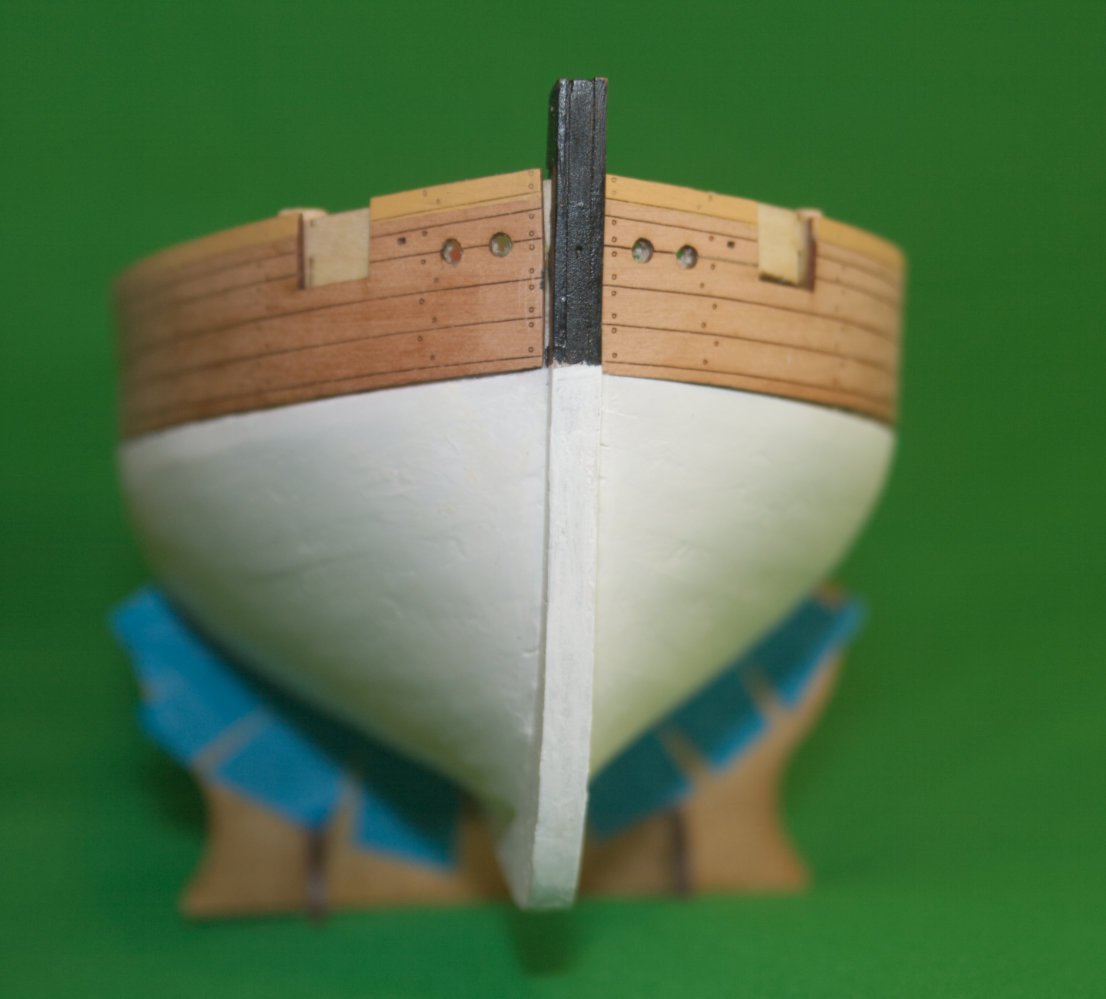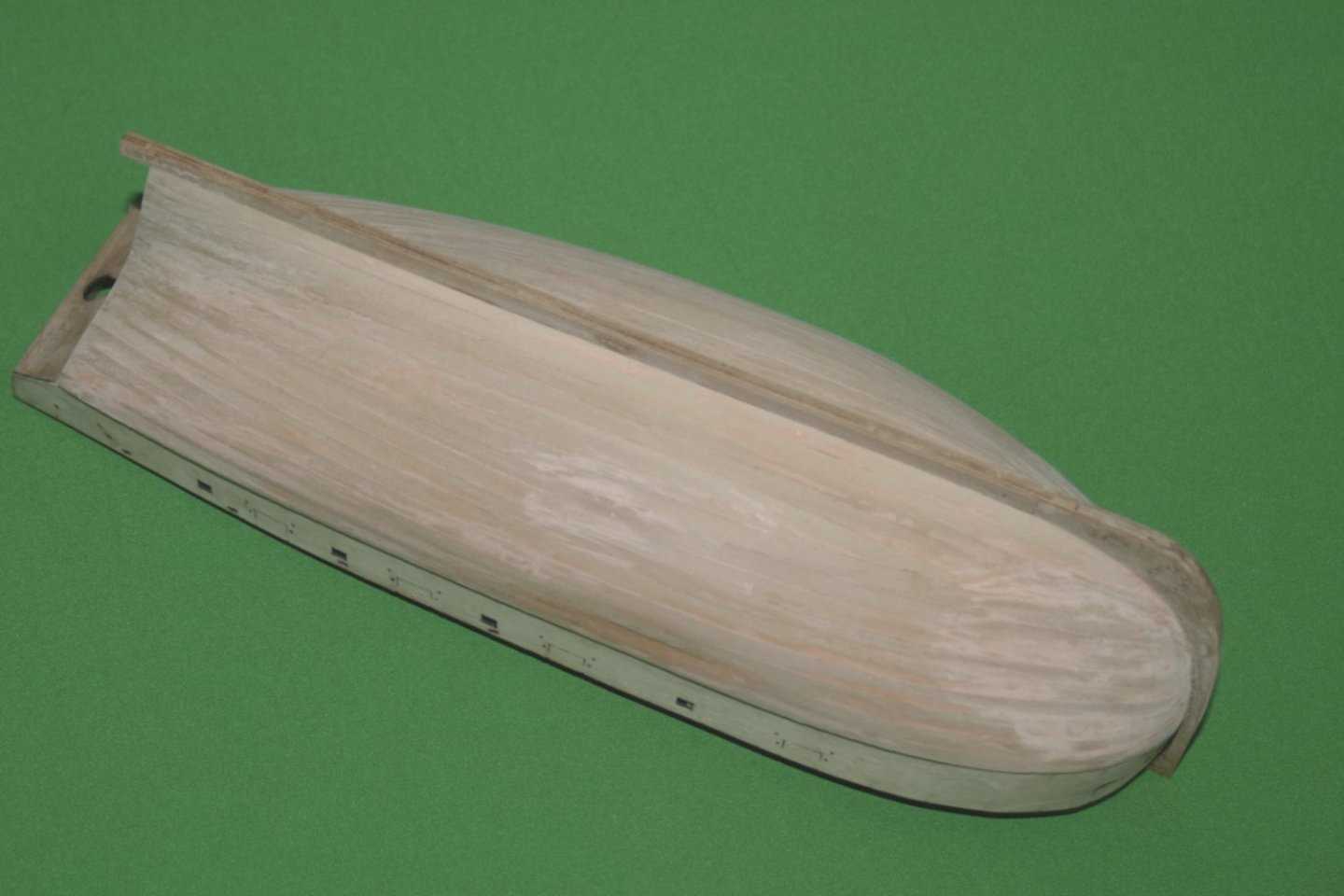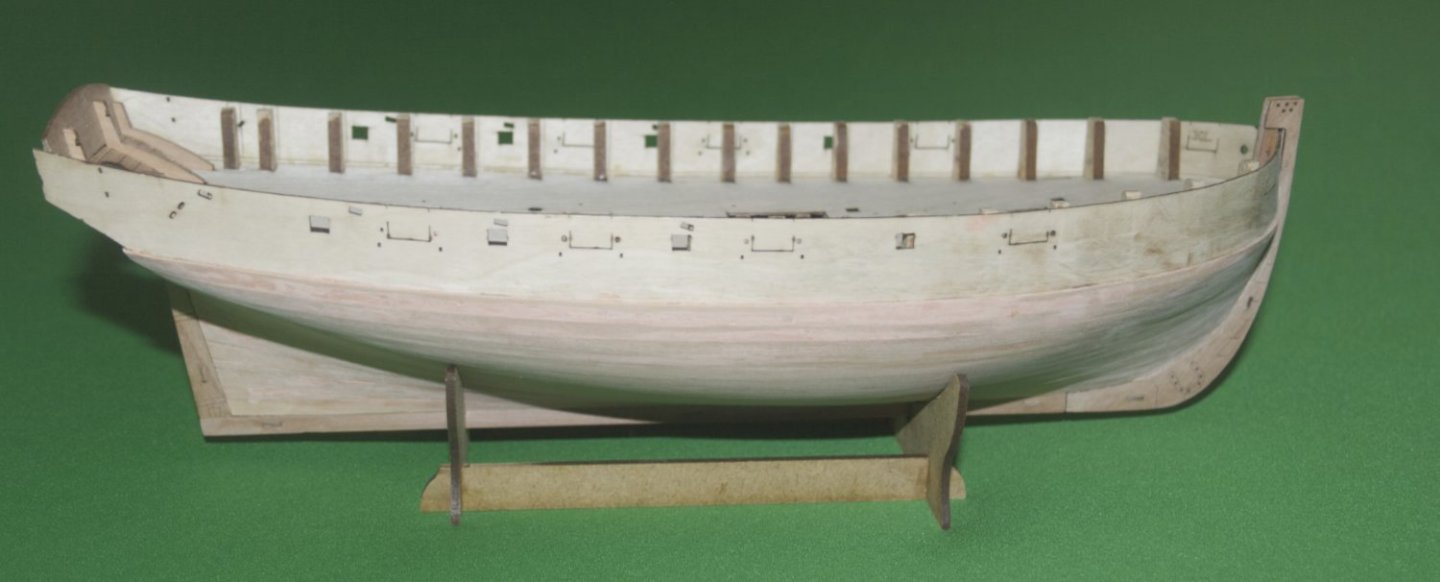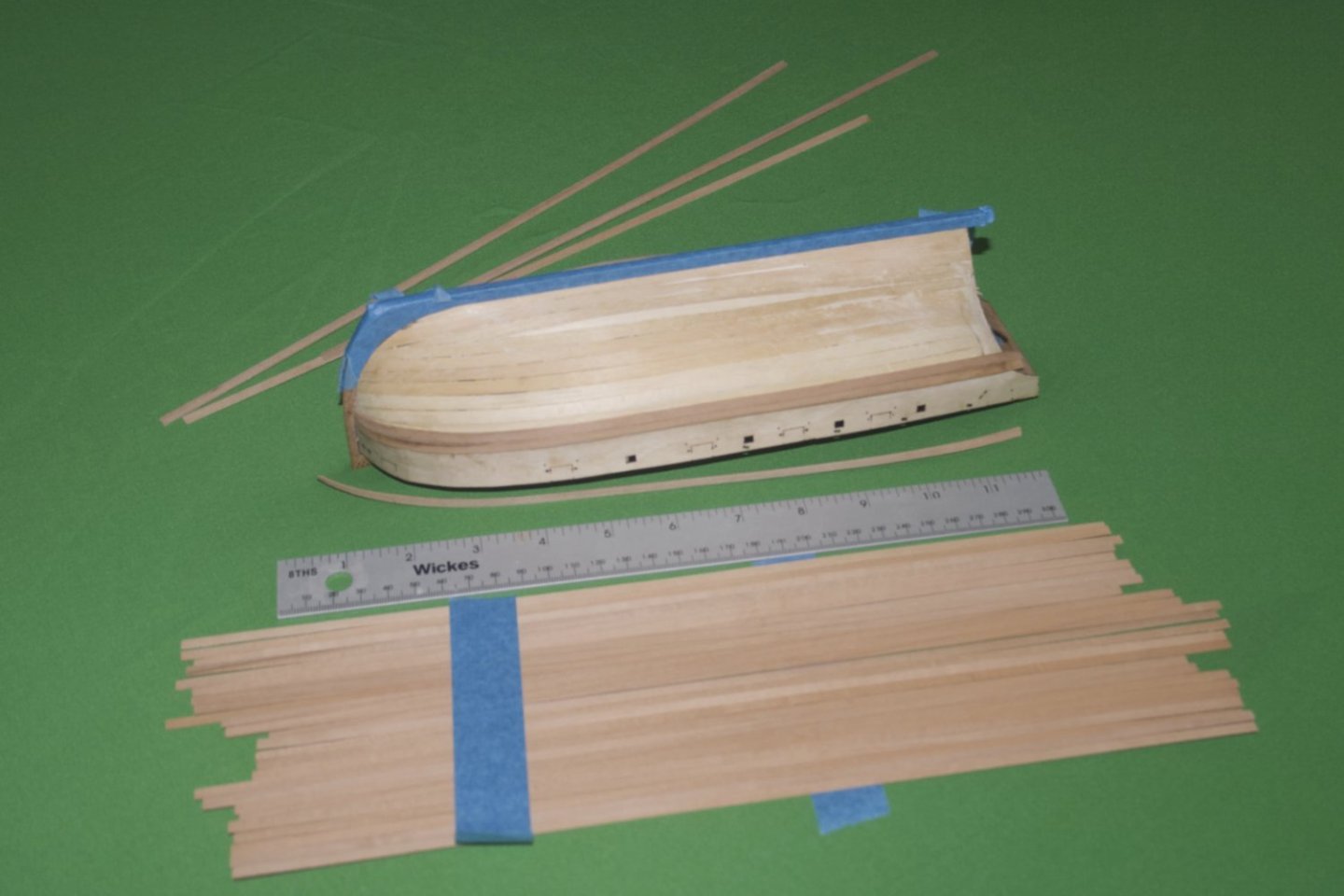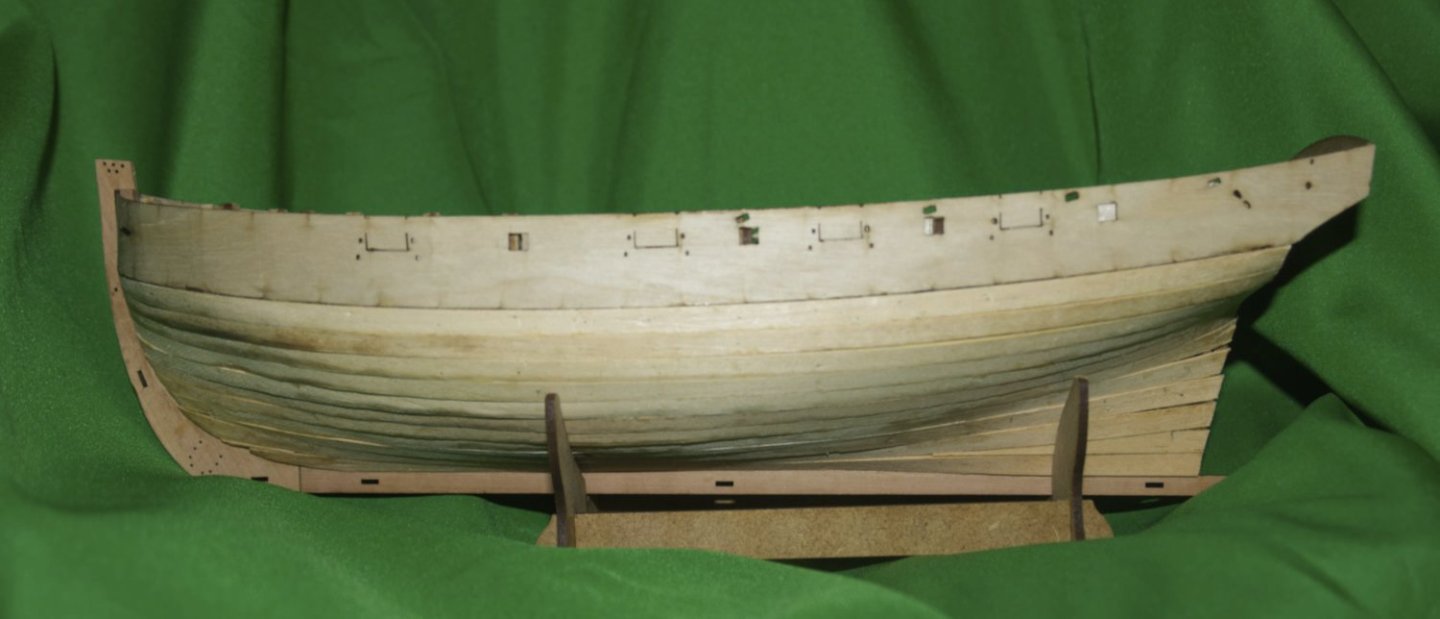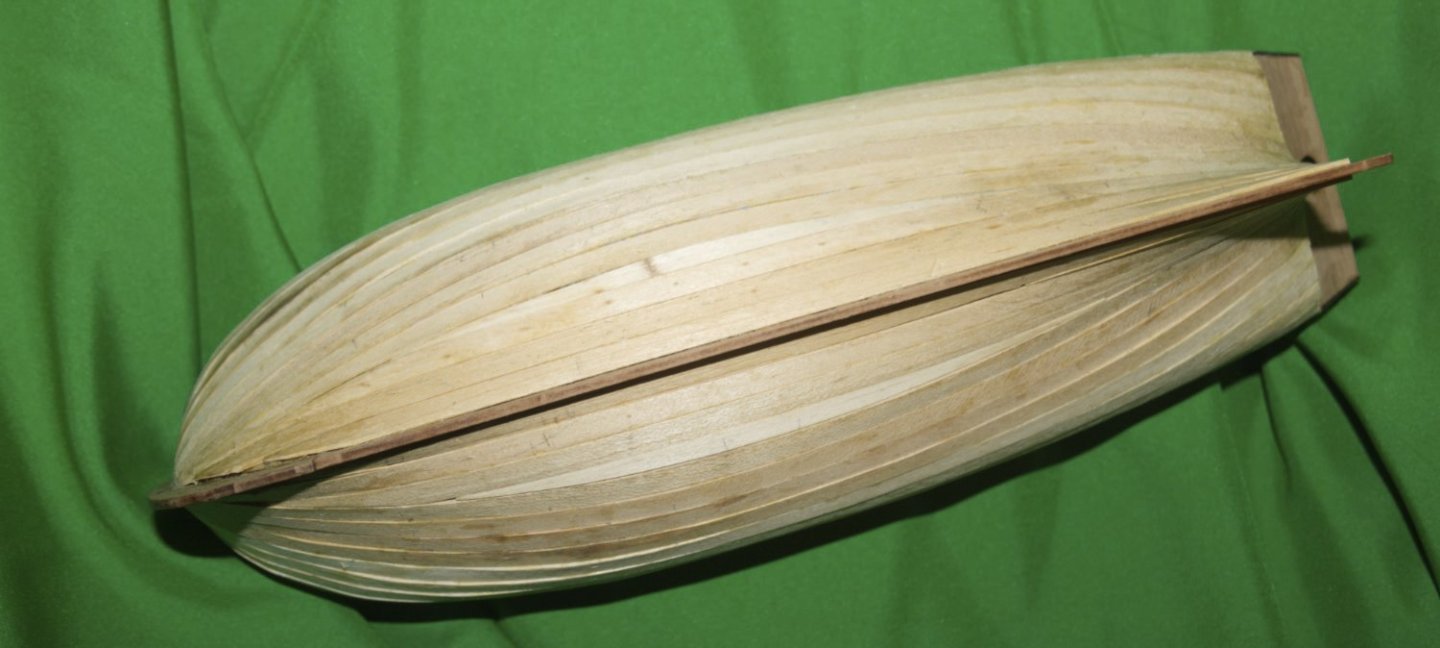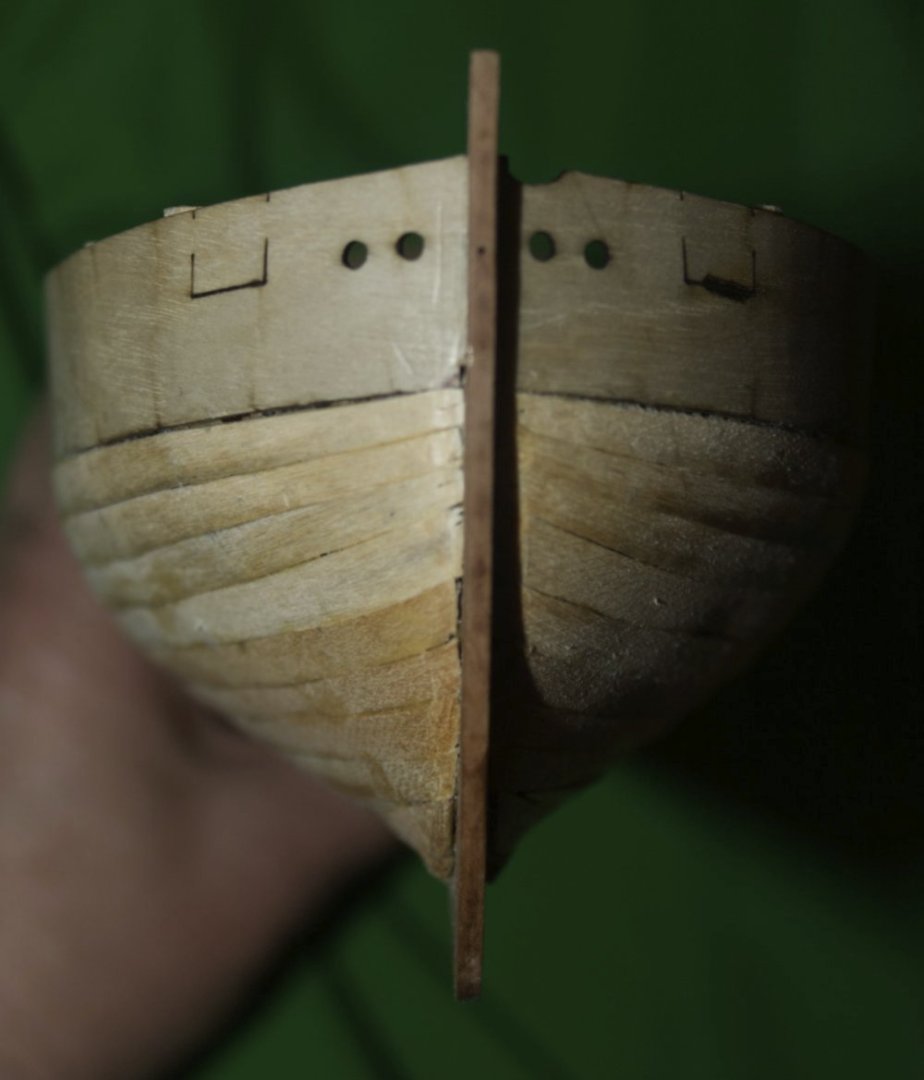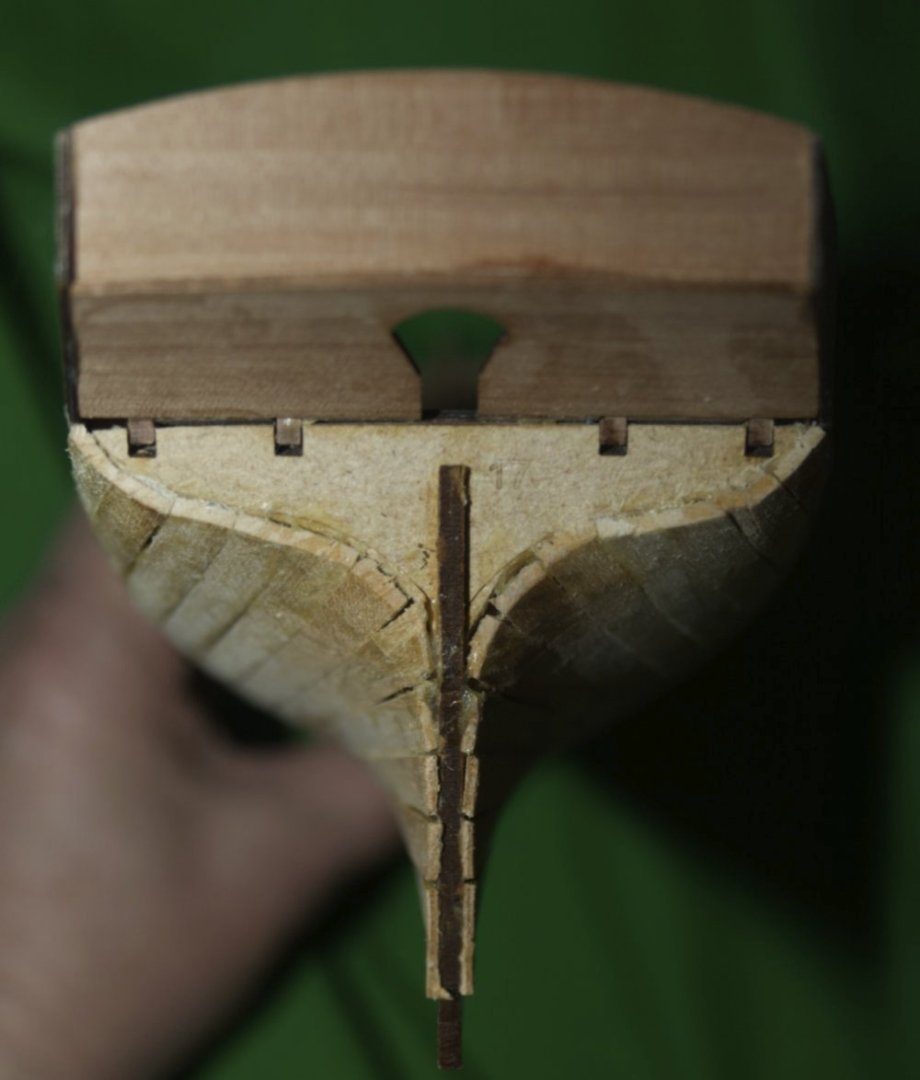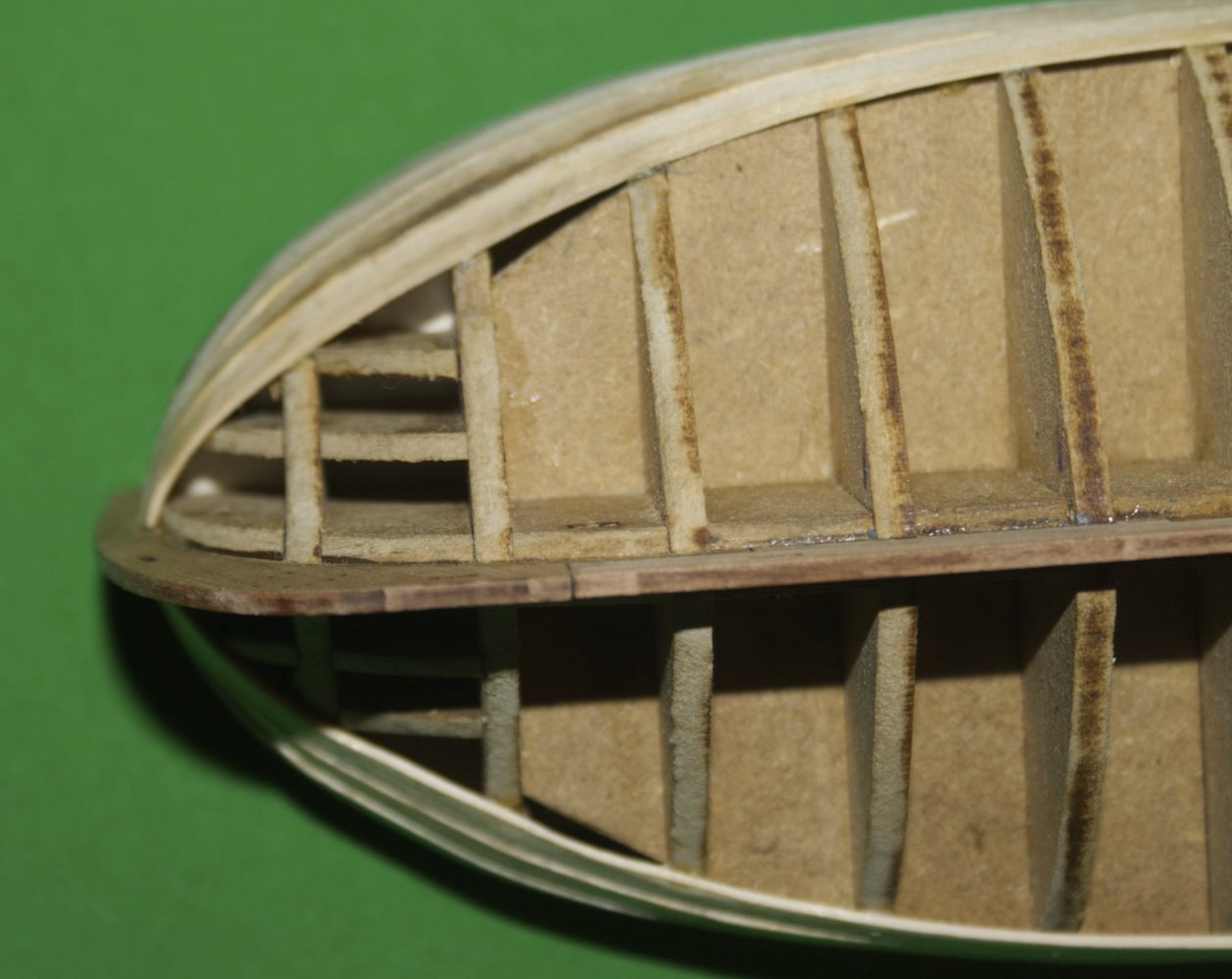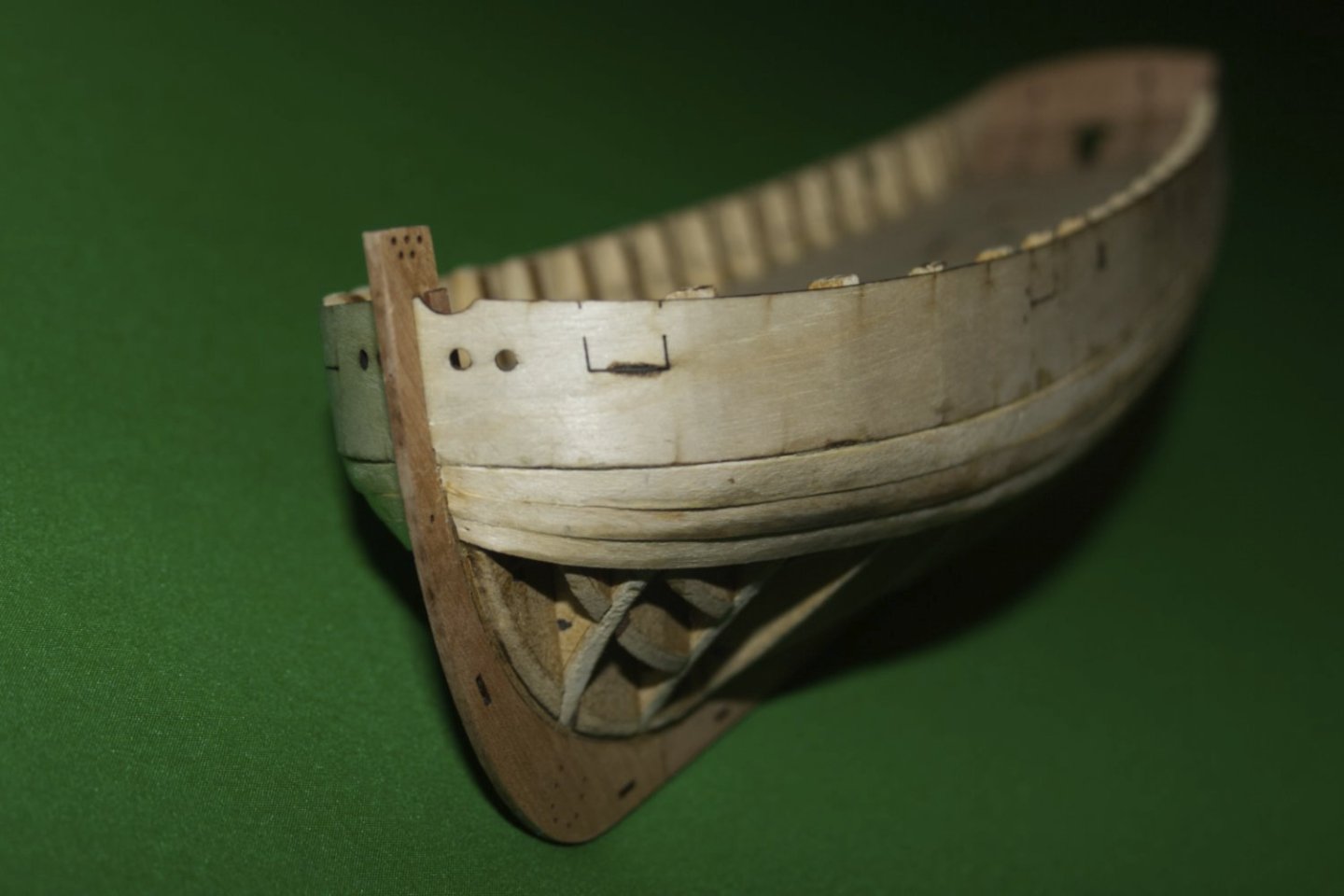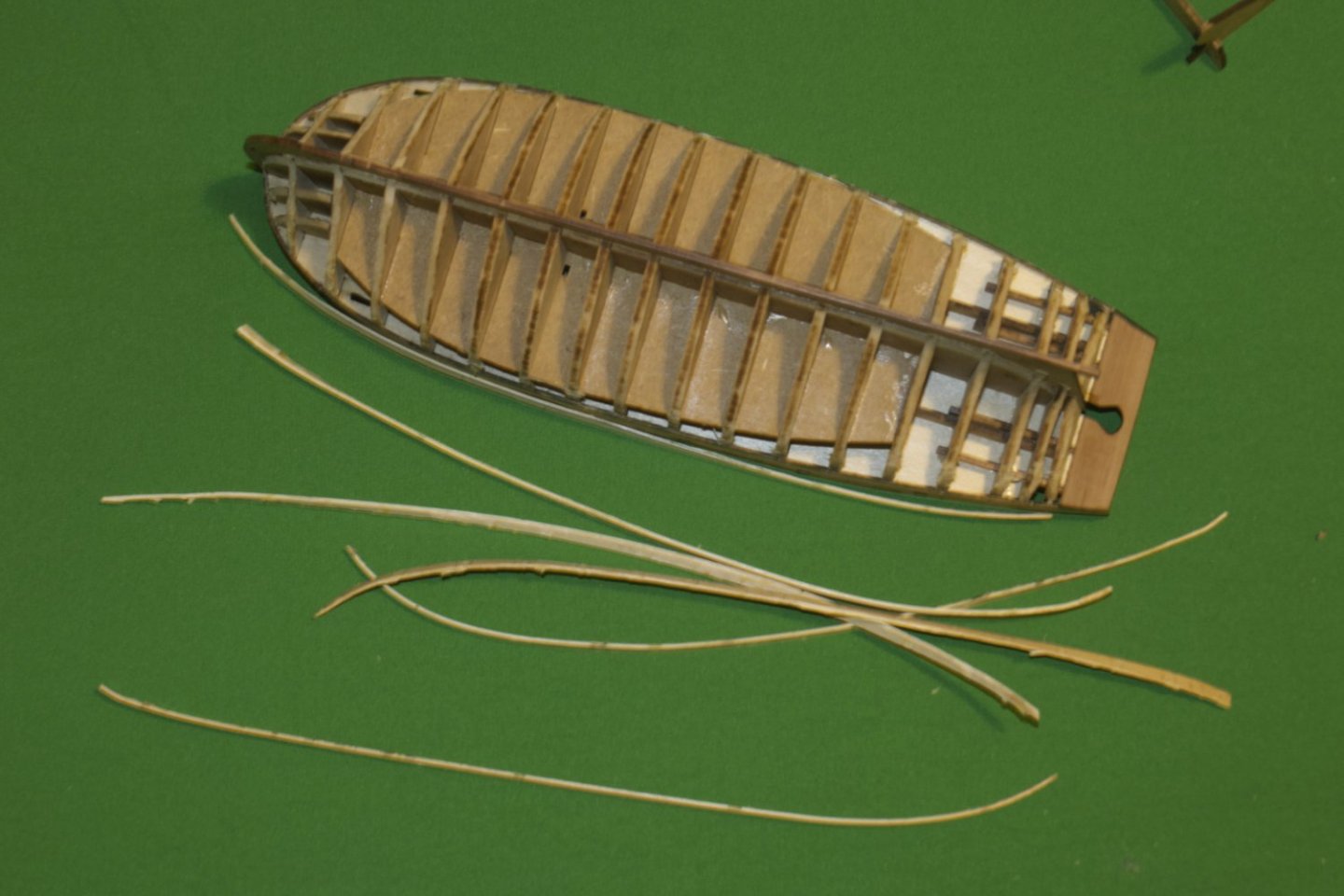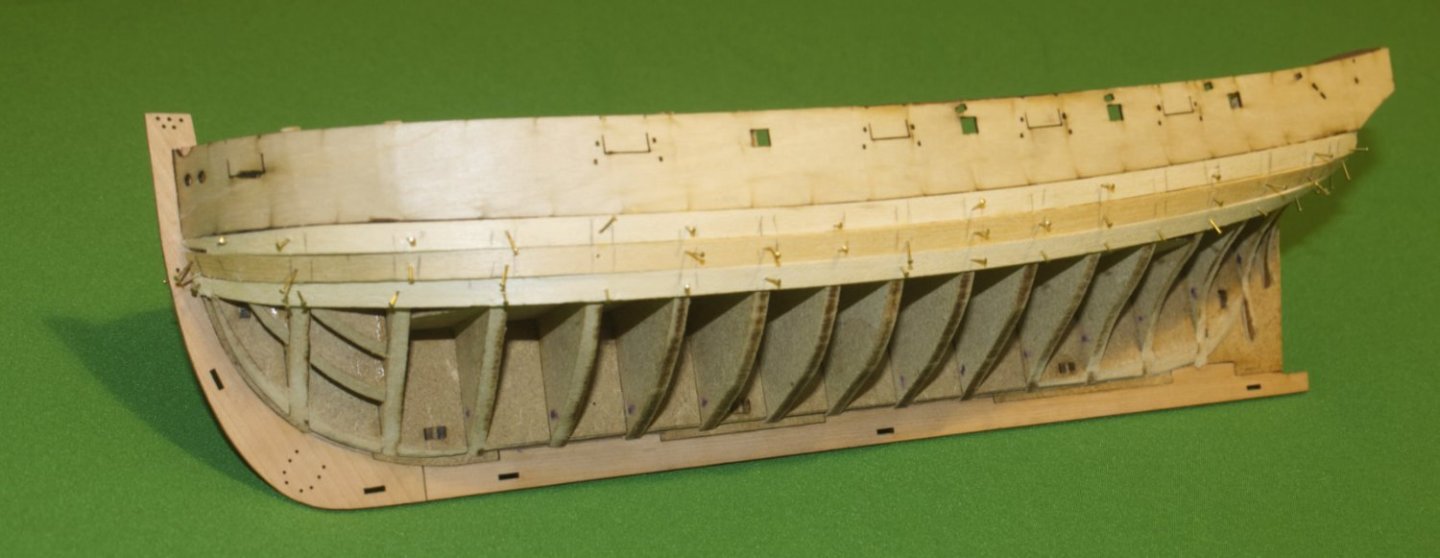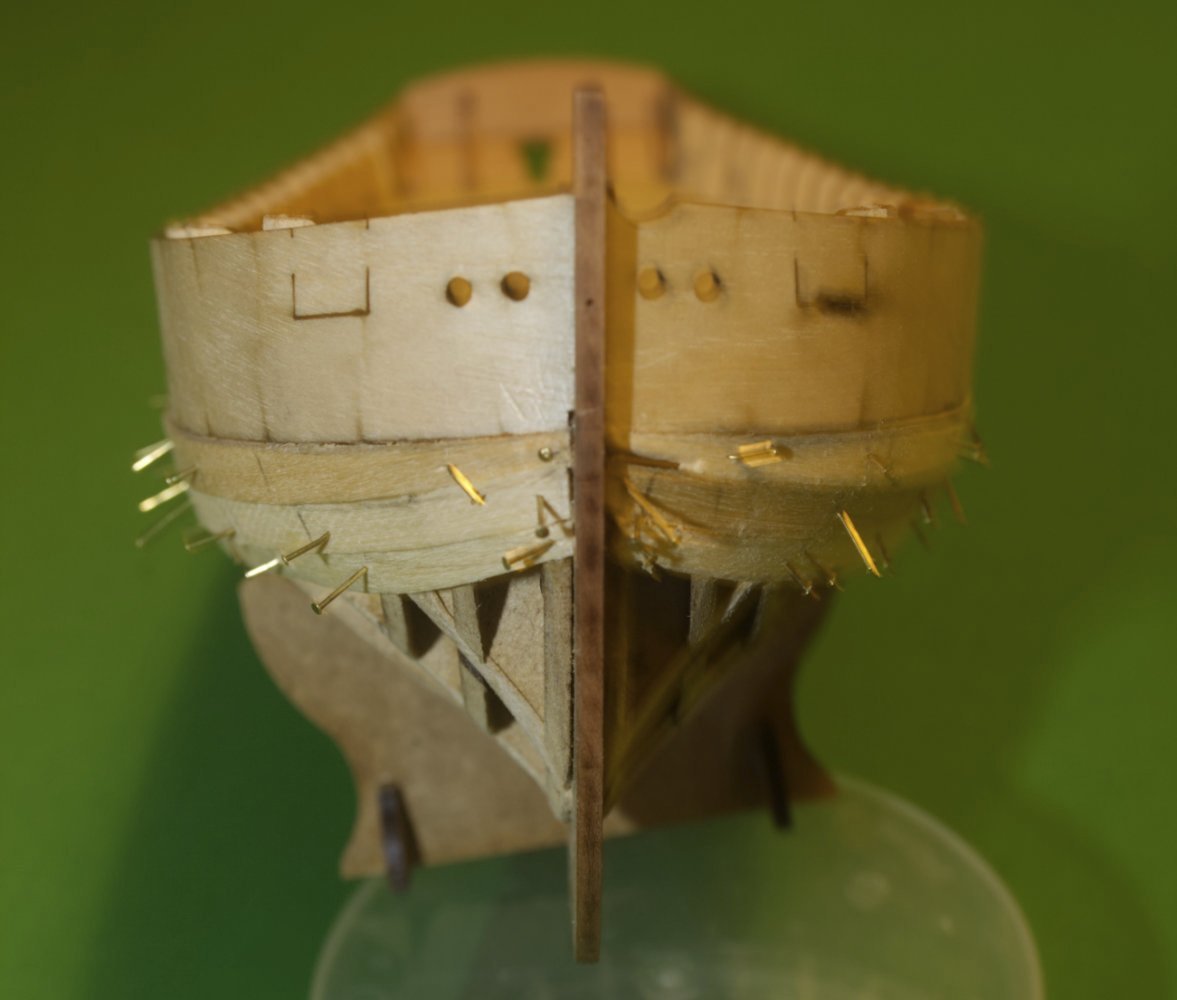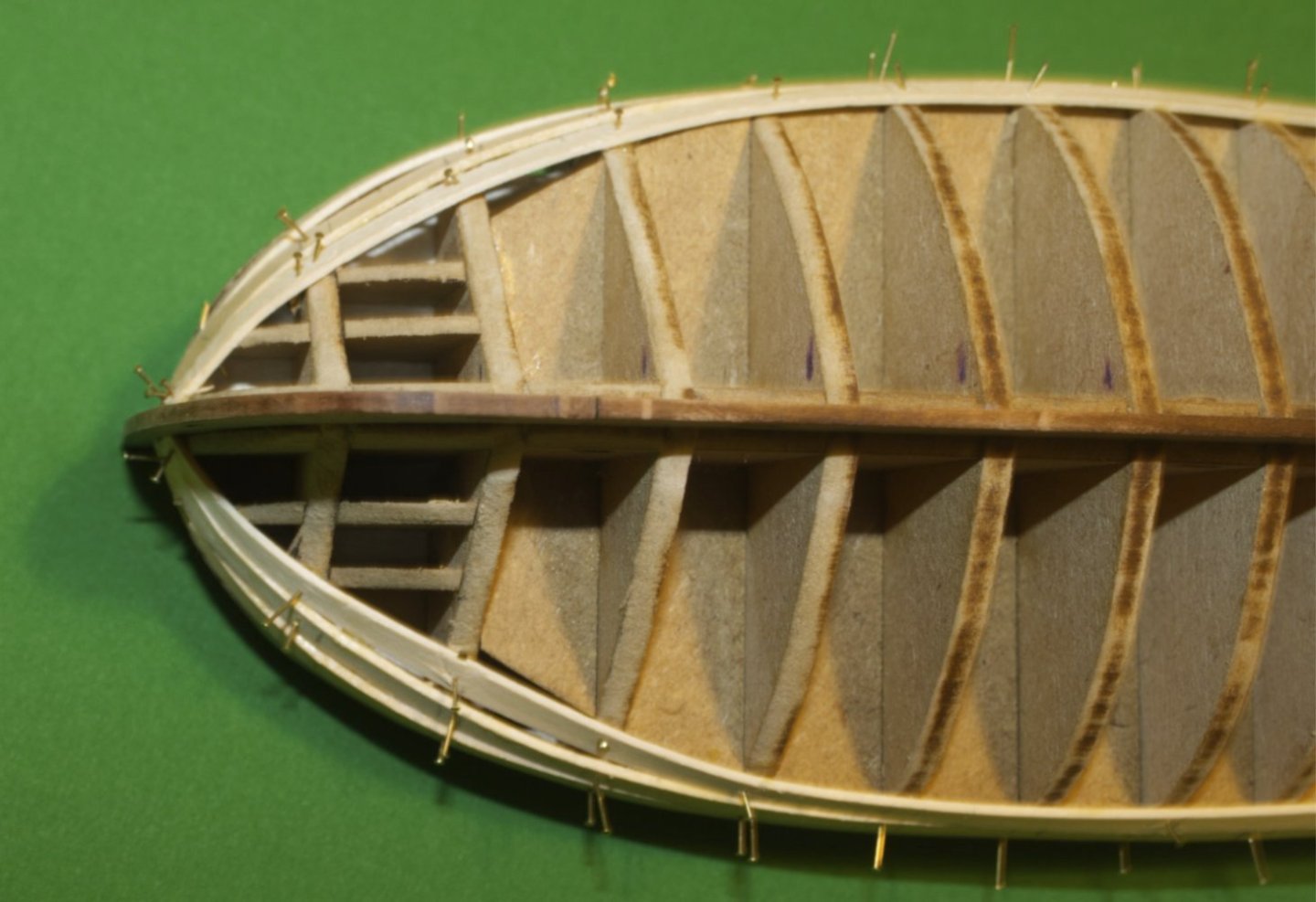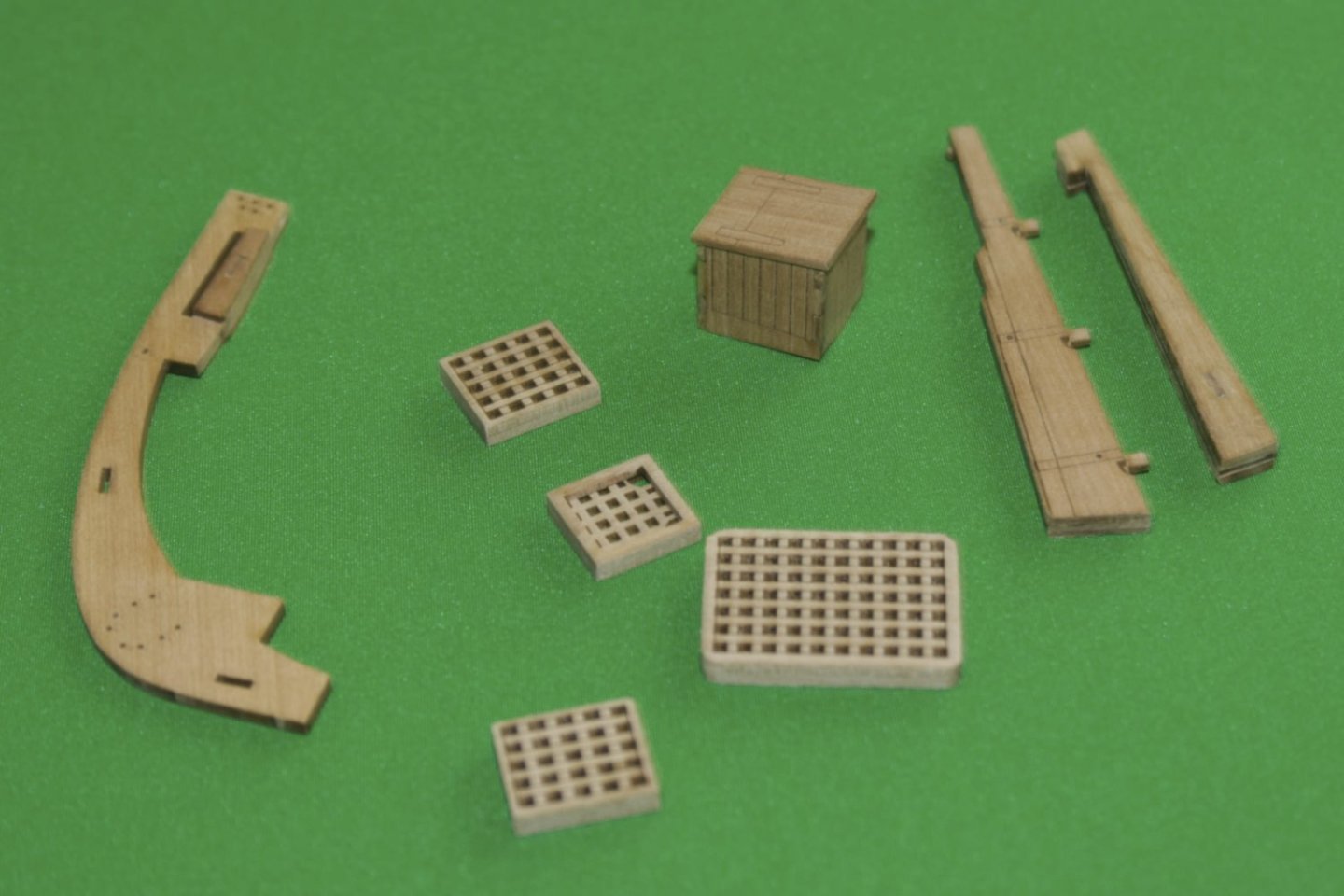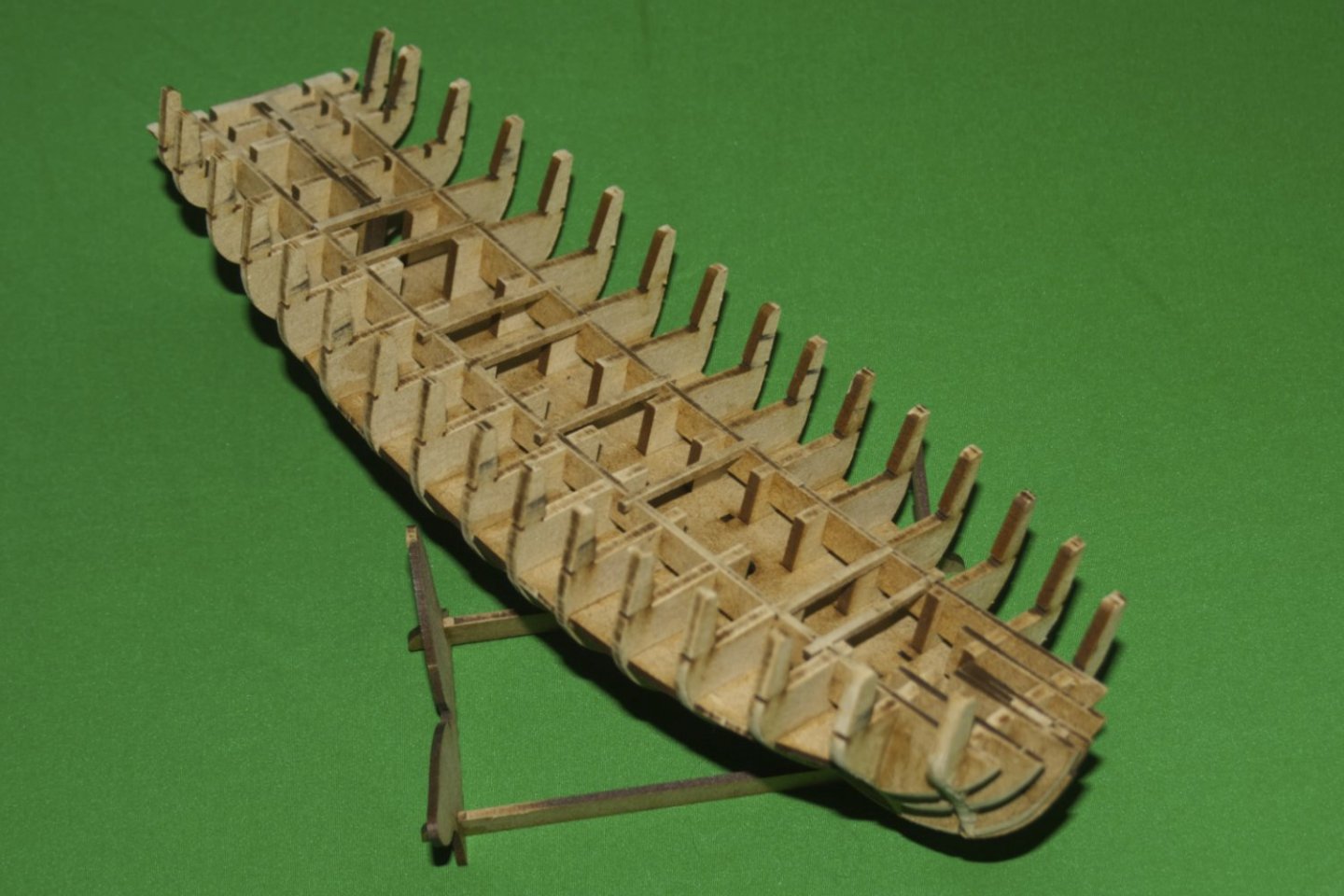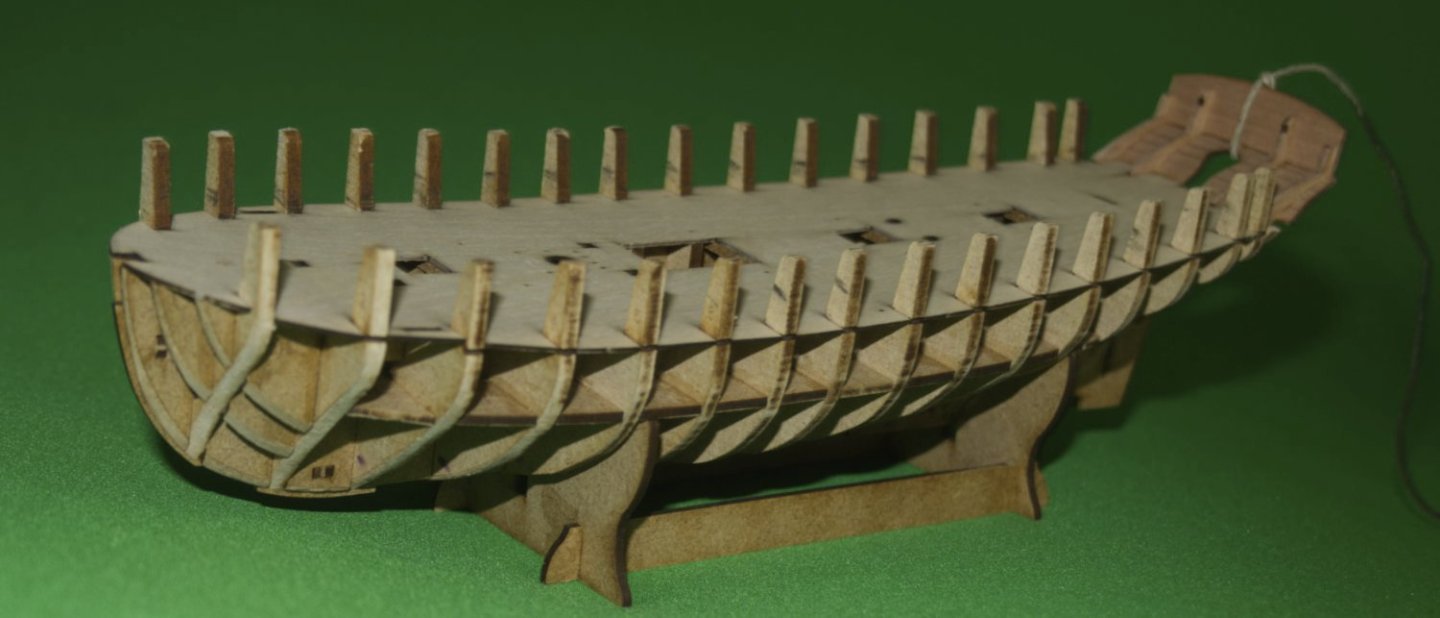
Pitan
NRG Member-
Posts
170 -
Joined
-
Last visited
Content Type
Profiles
Forums
Gallery
Events
Everything posted by Pitan
-
Chris, this looks as though it was taken from Nelson's statue at Trafalgar Square? There will be some distortion on the statue, due to the original sculptor exaggerating the top of the figure to compensate for perspective. It is worth checking paintings made during Nelson's life, to make a more balanced form. If I remember Nelson's biography, he had a relatively slight figure for much of his life. He did, for a while, bulk up, but lost the extra weight during an illness (possibly malaria, though may have been some tuberculosis).
-
Think you are overthinking this. At least, for a Vanguard kit. Follow the instructions in Vanguard's manual, and your hull should be fine.
- 60 replies
-
- vanguard models
- cutter
-
(and 1 more)
Tagged with:
-
Looks interesting. The kit has a hull cradle sized to support the hull at the frames (even before planking), but I can see other stages in the build where your jigs will be useful. A modification of your cutting jig might be very useful when working on my mast and spars. I wonder? Pondering ...
- 60 replies
-
- vanguard models
- cutter
-
(and 1 more)
Tagged with:
-
The kit supplies flat etched brass belaying pins. Personally, I'd prefer round pins.
- 60 replies
-
- vanguard models
- cutter
-
(and 1 more)
Tagged with:
-
p.s. While you are replacing stuff, have a look at the belaying pins, see what you think.
- 60 replies
-
- vanguard models
- cutter
-
(and 1 more)
Tagged with:
-
Going to watch, this will be different even for a new kit. I stand to be corrected, but, I thought Vanguard uses Ropes of Scale? Though the supplied standing rigging is black in this kit, and you may want brown?
- 60 replies
-
- vanguard models
- cutter
-
(and 1 more)
Tagged with:
-
Been a while since my last update, my apologies if this post becomes too long. The main cause of my delay was a self-inflicted problem. The instructions tell us to make sure the eyebolt openings in the spirketting patterns line up with those in the inner bulkheads (parts 32 and 33, L & R). Thing is, these parts fit the hull very nicely, and I didn't think about the holes until it was too late. This left me with eyebolt holes very much out of line. Sorting that out involved several iterations of filling holes and using a jig to line up and drill new holes. This is, essentially, the jig I wound up with; a simpler style would be better. Holes are now drilled, gun wales and rails have been added, along with a small colour change. The starboard looks fine, but I have some fettling to do port stern timer (sp?) Oh, and that starboard bulkead, at the bow, is now filled. Don't think I'll try to correct that colour, it takes some looking to see the issue.
-
To the other advice, I'd suggest supporting each foot while you trim off the base. When you display the figure, consider adding a bit of supporting scenery below the knee to help keep the figure safe and upright. This is common on stone (and ceramic) statues, e.g. Nelson's column (https://en.wikipedia.org/wiki/Nelson's_Column#/media/File:Admiral_Horatio_Nelson,_Nelson's_Column,_Trafalgar_Square,_London.JPG)
-
Looks good, wish I'd seen your lining up trick for the numbers earlier.
- 125 replies
-
- Trial
- Vanguard Models
-
(and 1 more)
Tagged with:
-
Oh, another Vanguard Sherbourne! I found that the plank woods bend nicely with water, just take your time and get it right. You probably do want to bend in three dimensions - up-down, around the hull (especially the bow), and apply twist. The twist is hardest to get, especially around the bow. I found heat helped a lot. Both PVA and Titebond soften with heat, but will grab again as they cool.
-
Sherbourne now has outer bulwarks and some paint. I have an alignment issue with the starboard bulwark at the bow: Need to think about a solution to that. A question. I'm thinking about adding sails. Is there any guidance for adding sails to an 18C cutter? FWIW, the kit has three yards on the mast, main and driver booms for the gaff, and a retractable bowsprit.
-
Thanks Thukydides. The first layer of planks is on, still needs sanding and filling. Three stealers per side, one each at the bow, the stern, and amid-ships (is this last a stealer?) FWIW, I re-used two (of six) planks from my first, failed, attempt. The reset were fresh items in the kit. Sanding next, then filling
-
Thanks @mugje, the kit is beautiful, I hope I can do it justice. New planks have been added. Just three per side as before, but a revised approach. I'm using Chris's technique to define the bow taper, but an electric plank bender to shape the timber before, and after, glueing and pinning. (Tried soaking, but haven't got the technique right yet.)
-
Work has progressed on the Sherbourne, with the bulwarks on and a start to the first layer of planking. This is my first PoB build, and I'm not sure if what I'm seeing is usual. From the sides this looks OK, as far as I can tell, pretty much like most PoB builds. Bow on, there may be an issue with the first starboard plank... It is only after seeing that photo that I even noticed this, but that plank nay be very thin after sanding. Looking from below, this really does worry me. Am I building trouble for myself here? Or is this normal?
-
Thanks @Thukydides, I'm impressed by how it goes together (see below). The kit arrived last week, and I started building over the weekend. I couldn't glue the hull then, but that didn't stop me doing some work. A few smaller components were glued together: From the left, this included the core of the stem, all the hatches, the companionway and the rudder and stern post. I also started bevelling the bulkheads, keel cheeks* and deck support patterns. These I glued up last night. The hatch beams were added today. I succeeded in snapping two of them, the foremost and one of the middle ones. Recovery and repair wasn't too difficult. These were followed by the stern frames (broke one of those too), the ply false deck and made a start on the transom. The piece of string here is pulling the counter into the transom - none of my clamps would stay in place long enough to hold the parts together. Impressions so far? Apart from bevelling and char removal on exposed edges of the pear parts, none of the components needed fettling. The parts just fitted. The only part that could be difficult is the stern counter. This has a double curve. This was managed with an electric plank bending tool. *Keel cheeks, my term. Pieces that sit either side of the keel, slotted down locking the bulkheads in place. Parts 19 in this kit. These have been designed to form the bearding line (this is my first build that could've had a beard & rabbet).
About us
Modelshipworld - Advancing Ship Modeling through Research
SSL Secured
Your security is important for us so this Website is SSL-Secured
NRG Mailing Address
Nautical Research Guild
237 South Lincoln Street
Westmont IL, 60559-1917
Model Ship World ® and the MSW logo are Registered Trademarks, and belong to the Nautical Research Guild (United States Patent and Trademark Office: No. 6,929,264 & No. 6,929,274, registered Dec. 20, 2022)
Helpful Links
About the NRG
If you enjoy building ship models that are historically accurate as well as beautiful, then The Nautical Research Guild (NRG) is just right for you.
The Guild is a non-profit educational organization whose mission is to “Advance Ship Modeling Through Research”. We provide support to our members in their efforts to raise the quality of their model ships.
The Nautical Research Guild has published our world-renowned quarterly magazine, The Nautical Research Journal, since 1955. The pages of the Journal are full of articles by accomplished ship modelers who show you how they create those exquisite details on their models, and by maritime historians who show you the correct details to build. The Journal is available in both print and digital editions. Go to the NRG web site (www.thenrg.org) to download a complimentary digital copy of the Journal. The NRG also publishes plan sets, books and compilations of back issues of the Journal and the former Ships in Scale and Model Ship Builder magazines.



